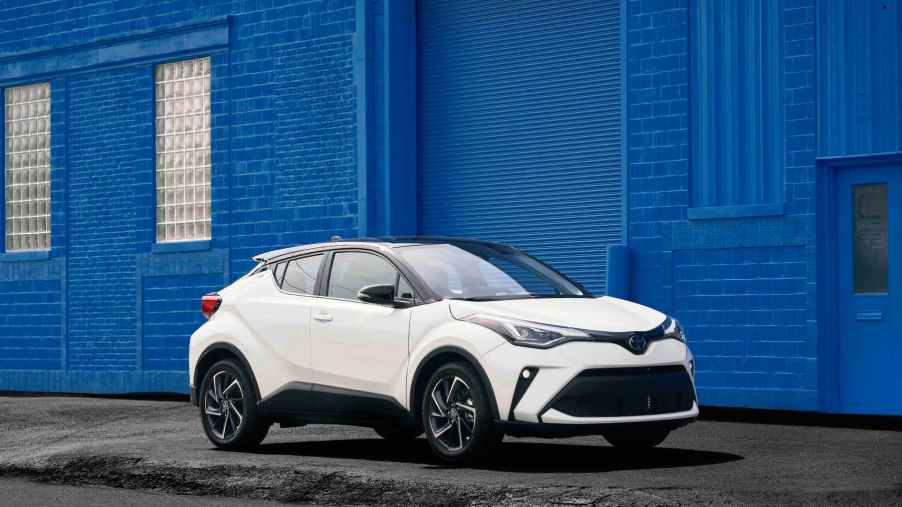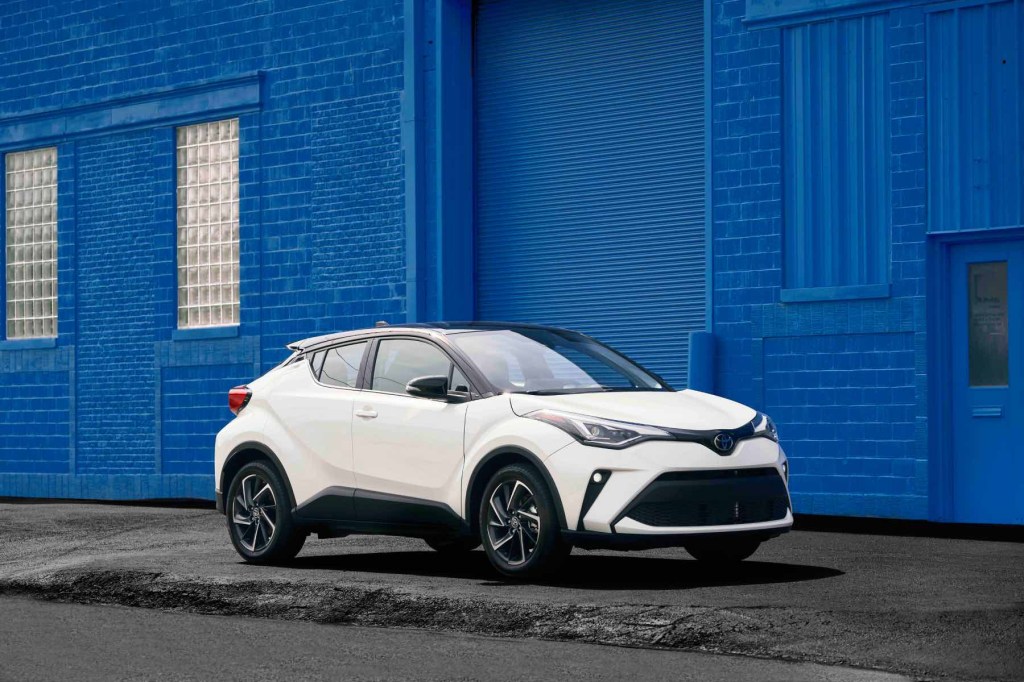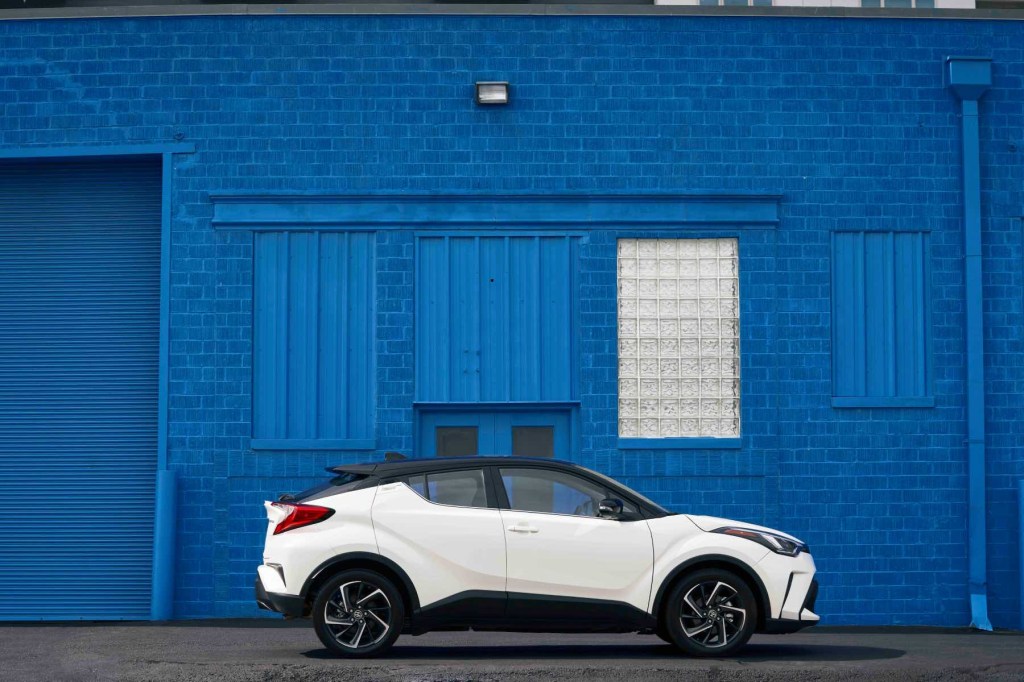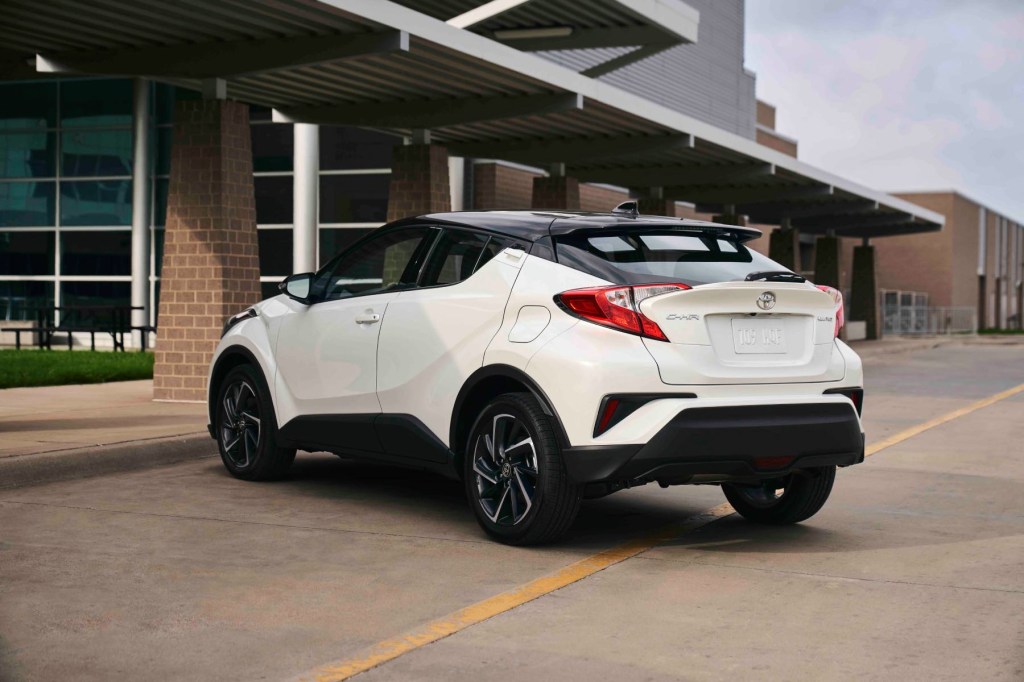
C-HR: This Weird Sales Failure Was the Anti-Toyota SUV
Toyota has long been known as a sensible automaker that produces honest, practical vehicles. Yet just a few years ago, Toyota made a strange subcompact crossover with weird styling, an impractical cabin, and subpar performance compared to its peers. It was called the C-HR, and it didn’t make much sense as a member of the Toyota lineup. In a sense, it was the anti-Toyota.
Quirky styling failed to outweigh its lack of substance

The C-HR was a classic case of a bold design failing to meet practical needs.
It certainly had the looks to get attention. The C-HR’s huge headlamps, gawping grille, and oddly profiled rear end helped it stick out more than any other Toyota model of the era. But underneath the surface, it was a bit of a hot mess.
- It only had 37 cubic feet of maximum cargo capacity.
- It was only available in front-wheel drive, while nearly every competitor had available all-wheel drive.
- According to Car and Driver, the C-HR only had a non-turbo four-cylinder engine making 144 horsepower.
- It took 11 seconds to accelerate from zero to 60 mph.
- The C-HR could barely manage 31 mpg highway and had a combined mpg rating of 27 mpg.
- Its cheapest trim level started at over $25,000.
All of this paints a grim picture for the C-HR’s sales prospects. It simply didn’t have the specifications to keep up with its peers, and its high starting price meant it wasn’t even a value proposition.
The C-HR was a swing and a miss for Toyota

Toyota introduced the C-HR subcompact crossover for the 2017 model year, and it was gone by 2022.
Whether it was due to its weird styling, lackluster performance, or cramped cabin, the C-HR never sold more than 50,000 units in a single year. That’s dismal by Toyota standards. For comparison, the Toyota RAV4 sold more than 400,000 units yearly in the same span, according to GoodCarBadCar.
The C-HR sold only 12,141 units in its final production year – a quiet exit for such a loudly styled model.
It isn’t often that Toyota makes a vehicle that counts as an actual failure. Typically, the brand sticks to proven technology and winning formulas. As a result, it’s become the world’s top-selling automotive brand.
That’s precisely why the C-HR is so puzzling – it was a weird, impractical subcompact SUV that failed to meet drivers’ needs.
Why did Toyota cancel the C-HR?

Toyota canceled the C-HR after the 2022 model following dismal sales, harsh criticism from all directions, and the arrival of the far more practical Corolla Cross subcompact crossover.
The arrival of the Corolla Cross seemed to be the true death knell for the Toyota C-HR. Pound for pound, it’s a superior crossover. A far more spacious cabin, available hybrid powertrain, and optional all-wheel drive make the Corolla Cross a competently competitive compact crossover. That’s more than the C-HR could ever say.


